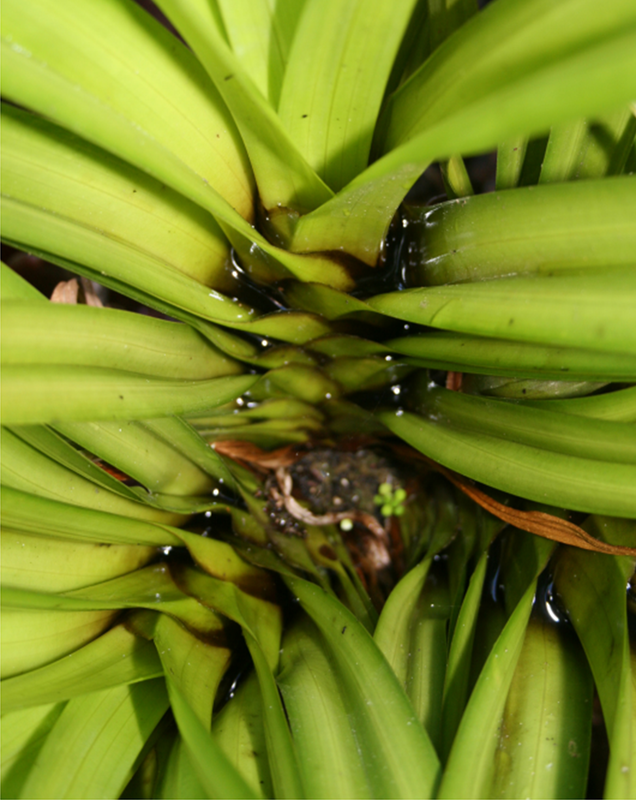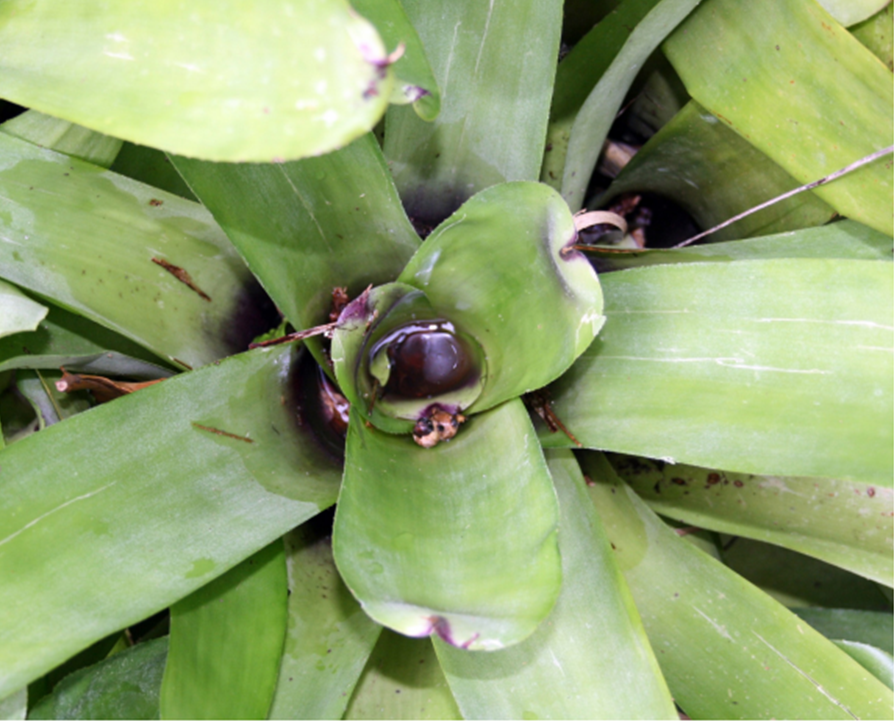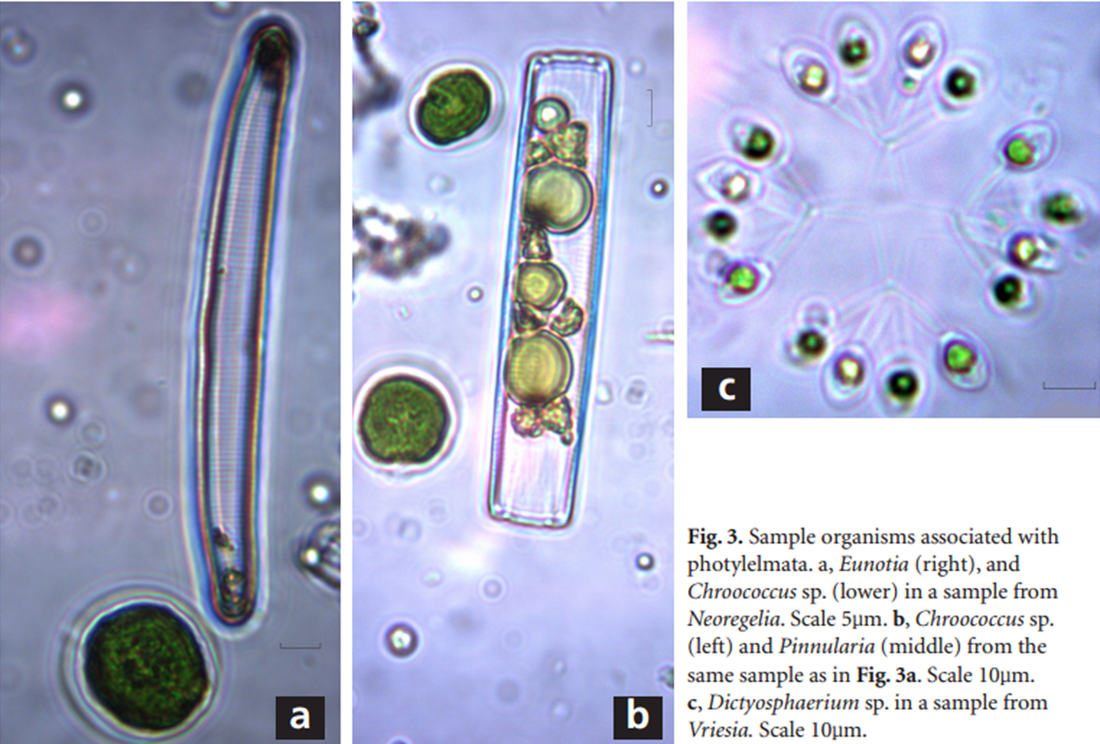Phytotelmata are the pockets of water that are stored at the base of kahakaha leaves. The authors describe these as "miniature temporary aquatic ecosystems". The "miniature" means that they are almost always "temporary" because they can dry up quite quickly.
Well, there is life in the phytotelmata of forest plants but not much. They authors found cyanobacteria, pollen grains and spores from fungi and ferns in the water pockets of kahakaha (Astelia hastata) and forest bromeliads but none of the algae that they were looking for. In contrast, urban bromeliads had a wide range of organisms in their phytotelmata, including four genera of diatoms (major group of algae).
- the tight leaf arrangement of kahakaha (Astelia hastata) and the black leaf bases may be limiting the light that algae need to thrive
- the pH of kahakaha phytotelmata (mean: 5) may be unsuitable for algal survival and growth (bromeliad mean pH: 5.7).
- algae may not be able to disperse to forest habitats from sources such as lakes, stream and sediments
Like all good research, this has got me thinking and wondering: would epiphytes growing nearer the tree tops have more phytotelmic life than those in the lower limbs? how would phytotelmata life compare in kahakaha of urban settings? and where will we find a student to comprehensively study these little ecosystems!!??




 RSS Feed
RSS Feed
